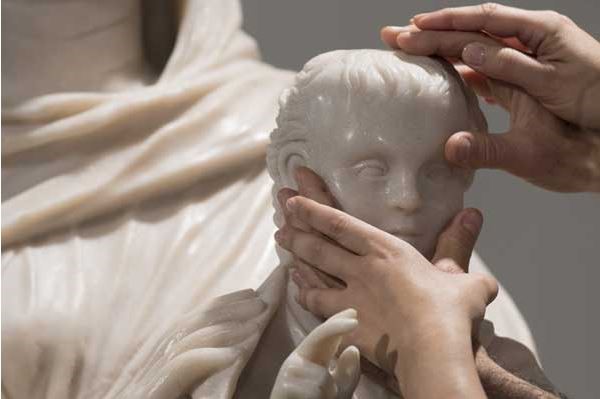12. New artisan working methods – Restoration
3D scanning and 3D printing are currently used in the restoring field too. The following example shows the South Gate of the Baptistery of Saint John, in Florence. The restoration was done by the Opificio delle Pietre Dure (also known by the initials OPD): an independent institute of the Ministry for Cultural Heritage and Activities, (Directorate General for Education and Research) whose operational and research activities are carried out in the field of restoration of works art. The project has started in 2016 and it’s still in progress because of its complexity. They had to remove the door from the building, after that some specialists cleaned the 28 bronze panels, 3D scanned and re-elaborated them on a 3D software, then 3D printed. Thanks to the collaboration of a specialized foundry silicon molds of each panel were made, then hot wax was poured into the molds, a plaster cast was made for each of the obtained pieces and bronze was poured in them. The panels’ surface will be refined by chiselers and acknowledged artisans that will refine them, apply a patina and coating with gold leaf as the original ones.

Image 12.1
Completed the final assembly, the duplicate of the South Gate will finally be installed, welcoming the faithful and tourists again to visit the Baptistery of Florence, while the original will continue the restoration process until its final exposure at the Museo dell’Opera del Duomo in safety and controlled climatic conditions.
WHEN TECHNOLOGY PROVIDES ACCESSIBILITY
The Museo dell’Opera del Duomo of Florence proposes a new tactile path designed not only for people who are blind and visually impaired but for everyone. The name chosen to indicate the route, TouchAble , is composed of the words in English able and touch, that is ” skilled to the touch “, and wants to emphasize the skill and not the disability. Thanks to previous restoration projects, faithful reproductions of renowned sculptures beside some panels of the North and of the East Gate of the Baptistery of Saint John are accessible to anyone who would like to explore them in a tactile experience.

Image 12.2
References:
[1] https://www.prototek.it/arte-e-tecnologia-3d-la-porta-sud-del-battistero-di-firenze/
[2] https://www.bitculturali.it/2017/06/disabilita-e-cultura/percorso-tattile-museo-duomo-firenze/
